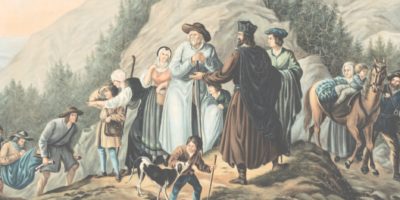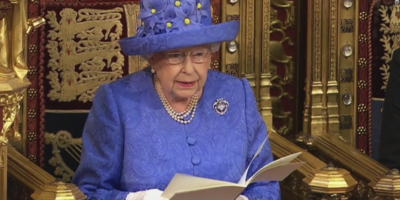Had young Martin Luther not been caught in a heavy summer thunderstorm in the first week of July, 1505, there may never have been a Lutheran Reformation.
For while returning along a country road to his university law-studies in Erfurt, a great thunderclap burst beside him. Terrified, the 21-year-old desperately pleaded with St Anna, mother of Mary, to let him live, vowing to enter a monastery and become a monk.
On returning to his classes, some of his fellow students urged him not to take the vow seriously. Others said he should. As we all know, Luther kept his vow and became an Augustinian monk, greatly against his father’s will.
Twelve years later, as a monk-scholar, Luther himself burst on the European landscape like a thunderclap, terrifying the top echelons of the Roman Catholic Church by his 95 Theses challenging the church’s fundraising methods through selling indulgences.
The date of October 31, 1517, has become the accepted start of the Lutheran Reformation, and is still widely observed as Reformation Day. In the popular imagination, that is the day Luther nailed the famous theses to the door of the Castle Church in the town of Wittenberg where he now lectured at the university.
Scholars however doubt that Luther ever posted his arguments in this way. He never wrote anything himself about such an incident. The first alleged account only appeared after Luther’s death, originating from his colleague and friend Philipp Melanchthon who was not called to Wittenberg as a professor until 1518. What does seem certain is that on October 31, 1517, Luther wrote a respectful letter to his superiors denouncing the sale of indulgences. He included the 95 theses as the basis for further discussion.
Discovery
That date was a significant step towards what later unfolded as the Reformation; as was Luther’s own discovery of the theological truth of justification by faith a couple of years earlier. Yet the Reformation didn’t just suddenly happen everywhere. Two whole generations passed before it took root in the Low Countries, for example.
To say therefore that the Reformation ‘began’ on October 31, 1517, is a little contrived. Nevertheless, it is as useful a date as any to hang the commemorations of what became a major influence in the European story, from the 16th century onward.
This year’s Continental Heritage Tour, which began this weekend, takes place therefore on the official ‘500th anniversary of the Reformation’, or rather, the 500th anniversary of a significant development which eventually grew into the Reformation movement changing church and society in northern Europe.
On Wednesday, as we approach Erfurt in our two vans, the weather forecast is for rain. Who knows? It could turn to summer thunderstorms, as it has on past tours as we have neared the town where Luther entered the Augustinian monastery. Visiting the monastery church, where the novice Luther lay prostrate before the altar, the cell where he wrestled nightly with the devil, and then watching the Joseph Fiennes film (2003) depicting the monk’s struggle for truth, brings the story tangibly alive for the tour participants.
The next day we will be in a very busy Wittenberg, tracing the reformer’s footsteps through the town from the Castle Church at one end to the Luther House at the other where he and Katherina von Bora modelled family life to a nation with no previous examples of married spiritual leadership.
Dialogue
Next Monday we pick up the thread again in Augsburg, where Luther was first summoned to give account to Cardinal Cajetan. We visit St Anne’s Church where Luther stayed, and where more recently, in 1999, the dialogue between the Vatican and the Lutheran Church produced the Joint Declaration on the Doctrine of Justification (JDDJ).
This declaration revealed a major change of heart on behalf of the Catholic Church. On the basis of this declaration, Pope Benedict XVI, who–as Cardinal Ratzinger–was personally involved in the dialogue with the Lutherans, declared in St Peter’s Square in 2006 that Luther had been right about the doctrine of justification.
Which interestingly brings us back to Luther’s first thesis: “When our Lord and Master Jesus Christ said, ‘Repent’ (Matthew 4:17), he intended the entire life of believers to be repentance.”
At stake for Luther was the meaning of repentance. Did the Latin phrase Poenitentiam agite mean ‘to do penance’ as an external penitential action, or ‘to repent’ as an inner heart change? Repentance, he concluded, meant a change of heart, a lifestyle of heart-change.
This insight, prompted by reading Erasmus’ Latin translation newly published in 1516, triggered a 500-year argument which at last has been resolved through both sides adopting a change-of-heart attitude.
Other significant differences still remain, involving the ordination of women and the sacraments. But if we would all take our cue from Luther’s first thesis, adopting a lifestyle of heart-change, this commemoration year could be one of great mutual discovery.
Till next week,



